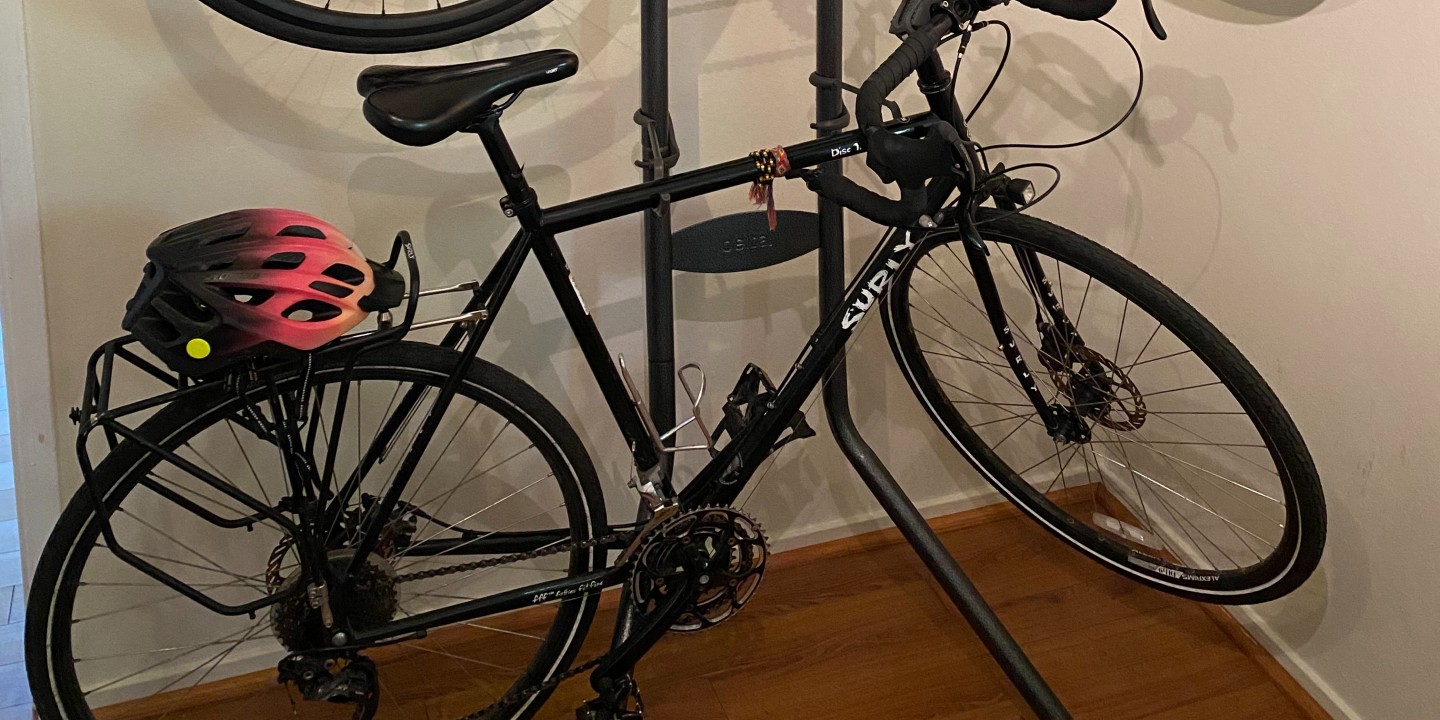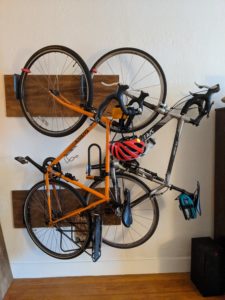While it’s common practice and common sense to securely lock your bike when locking it in public, it might be less obvious that you should do the same when leaving your bike in supposedly secure storage, such as a storage locker or garage.
We have recently received several reports from constituents about burglaries and break-ins resulting in bike theft. You can lower your risk of having your bike stolen from inside your garage, home, or storage locker by securely locking it to an immovable object. We’ve compiled suggestions below, including tips and pix of how your San Francisco Bicycle Coalition staff lock-up.
Here’s how we recommend locking your bike in a garage, storage locker, or home:
- Cover your bike with a sheet or tarp so that it’s not recognizable through a window.
- If you are able to store your bike inside your home (instead of in a garage, outside, or in a storage unit) we recommend doing so. You can use a rack to help keep the bike(s) out of the way. If you are limited on space and have the means to purchase a bike, you might consider a folding bike.
- Lock your bike to an immovable object.
- If you have a concrete wall or floor, you can install a ground or wall anchor and lock it to that. This is probably the most secure option when storing your bike in a garage or storage unit. Be sure to install it in a location that’s not visible from the outside.
- You can lock it to a pole or railing
- If you have a concrete wall or floor, you can install a ground or wall anchor and lock it to that. This is probably the most secure option when storing your bike in a garage or storage unit. Be sure to install it in a location that’s not visible from the outside.
- Use the heaviest/thickest lock available. Unlike when locking your bike on the street, where you need something that’s relatively easy to transport, in your home you should opt for the heaviest lock available to make it harder to cut.
- Be sure to lock the frame of the bike and both wheels. You can do this one of three ways. These graphics depict locking your bike to a sidewalk rack, but the same techniques apply when locking elsewhere.
- If these options aren’t available to you, there are a couple of better-than-nothing options.
- If you have a number of bikes, you can lock them together to make it harder for someone who is trying to steal them to do so.
- If you don’t have a completely immovable object, you can lock your bike to anything that’s large and cumbersome to move.
- You can lock your bike to itself by locking the wheel to the frame so that it can’t roll. This will make it harder to move.
- If you have a number of bikes, you can lock them together to make it harder for someone who is trying to steal them to do so.
These are important preventative measures that you can take to mitigate bike theft from your home. If you are able to, we also recommend investing in renter’s or homeowner’s insurance that covers your bike(s). There are a number of relatively inexpensive options, and in the event that your bike does get stolen, having insurance can cover most of the cost of replacing a stolen bike. When shopping for insurance, make sure that your policy would cover theft outside your home as well!
To learn more about how to keep you and your bike safe in SF, register for one of your free upcoming bike classes here.








